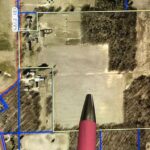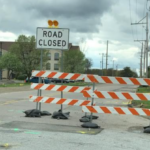 The Natural Resources Commission (NRC), during its bi-monthly meeting today, approved additions to the Laura Hare Nature Preserve at Blossom Hollow in Johnson County, and the Mossy Point Nature Preserve in Parke County.
The Natural Resources Commission (NRC), during its bi-monthly meeting today, approved additions to the Laura Hare Nature Preserve at Blossom Hollow in Johnson County, and the Mossy Point Nature Preserve in Parke County.
The nature preserve addition in Johnson County protects 40 acres of forest interior habitat. The extensive upland forest consists primarily of an oak-hickory community. Two species of shrew, the pigmy shrew and the smoky shrew, are found within the preserve and are classified as State Special Concern under the Species of Greatest Conservation Need program. Neotropical migrant birds use this site as a nesting habitat. Red-shouldered hawks, Eastern box turtles, and bald eagles also can be found in this preserve.
The Parke County nature preserve addition protects 25.73 acres along Sugar Creek and offers a trail and a parking area. The high, dry ridges support stands of white oak and shagbark hickory, while the rocky points extending down to Sugar Creek feature a riparian microclimate wet and cool enough to support one of the southernmost populations of relict Eastern hemlock. Beneath the hemlocks are such uncommon plants as witch hazel, partridgeberry, and ginseng. This is breeding area for several species of thrush and warblers, and is a winter roost for bald eagles.
In action regarding the Division of Entomology & Plant Pathology, the NRC concurred with the recommendation by the DNR review committee to deny a citizen petition to amend the Terrestrial Plant Rule. The amendment proposed would have removed reed canarygrass from the rule, allowing its use in Indiana as a forage crop. This invasive species reduces diversity of the flora and fauna within wetlands, causes erosion in areas next to large bodies of water, and is difficult to eradicate once established. The species is planted in areas that are prone to flooding in which typical forage crops are not suitable. Unfortunately, planting reed canarygrass in such areas also assists in moving this undesirable species offsite from one area to another as the floodwater recedes.
In other action, the NRC:
— Approved hearing officer reports addressing petitions filed by the Lake Monroe Sailing Association, Two Herons Marina, Hoosier Hills Marina, and Kent’s Harbor and the Sagamore Resort, and authorized the submission of findings and recommended fees to the United States Army Corps of Engineers.
— Approved amendments to Information Bulletin #1, allowing the Division of Hearings to streamline its operations by ceasing the maintenance of its Index of Agreed Orders. These amendments also offered technical and stylistic amendments to other portions of Information Bulletin #1.
— Granted final adoption to the readoption of 312 IAC 3, which provides standards to assist the Division of Hearings with the implementation of proceedings governed by IC 4-21.5 (AOPA).
More details on all actions taken by the NRC and supporting documents can be found at nrc.IN.gov/2354.htm.
The NRC is an autonomous board that addresses topics pertaining to the DNR and the NRC Division of Hearings.
NRC members include the DNR director, heads of three other state agencies (Indiana Department of Environmental Management, Indiana Office of Tourism Development, and the Indiana Department of Transportation), six citizens appointed by the governor on a bipartisan basis, the chair of the DNR’s advisory council, and the president of the Indiana Academy of Science. The Academy of Science president and the agency heads, other than the DNR director, may appoint proxies to serve the commission in their absences.
To view all DNR news releases, please see dnr.IN.gov.














